Search Images
Browse Content (p. 1556)
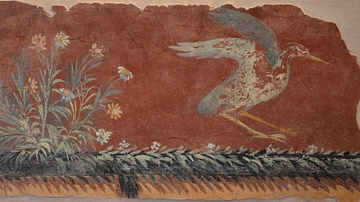
Image
Roman fresco with flowers and birds
Wall painting fragment with flowers and birds, from a Roman villa around Mt. Vesuvius, before 79 CE. (Badisches Landesmuseum Karlsruhe, Germany)
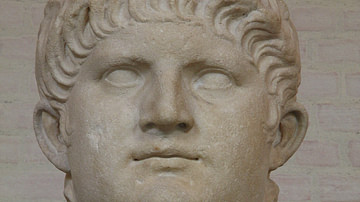
Image
Colossal head of Emperor Nero
Colossal head of Roman Emperor Nero (54 - 68 CE) belonging to a larger-than-life size statue, made a few years before his violent death, 1st century CE (Glyptothek Museum, Munich).
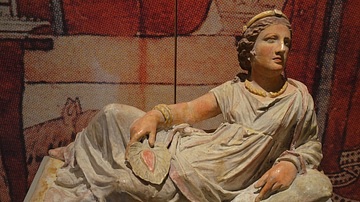
Image
Funerary urn lid of an Etruscan woman
Painted terracotta funerary urn lid of an Etruscan woman, from Chiusi, ca. 150-120 BCE (Badisches Landesmuseum Karlsruhe, Germany).
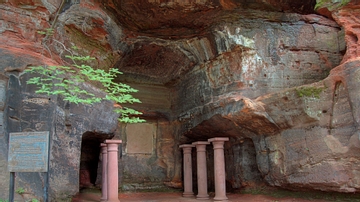
Image
Mithraeum in Saarbrücken
A mithraeum (a temple-cave dedicated to Mithras) found in the German city of Saarbrücken.
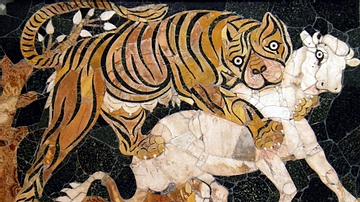
Image
Tiger Panel, Basilica of Junius Bassus
Opus sectile panel (made of precisely cut polished varicolored marble) from the Basilica of Junius Bassus which stood on the Esquiline Hill in Rome. The panel, dating from the 4th century CE, depicts a tiger attacking a calf. (Musei Capitolini...
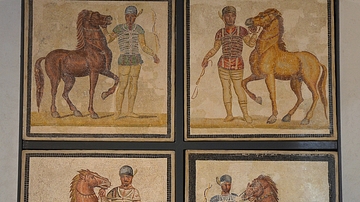
Image
Roman Mosaic with Charioteers
Mosaic depicting a charioteer and horse from each of the four circus factions (Red, White, Blue, and Green), 3rd century CE (Palazzo Massimo all Terme, Rome). Chariot-racing was the most popular sport in ancient Rome, and the Blues and Greens...
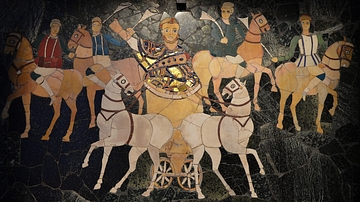
Image
Consul Junius Bassus
Opus sectile panel (made of precisely cut polished varicolored marble) from the Basilica of Junius Bassus, which stood on the Esquiline Hill in Rome. The panel, dating from the 4th century CE, represents the processus consularis (a procession...
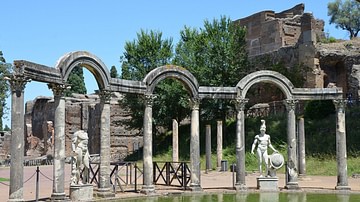
Image
The Canopus at Hadrian's Villa, Tivoli
The villa was constructed at Tibur (modern-day Tivoli) for Emperor Hadrian as a private summer retreat between 118 and 134 CE. One of the most striking and best preserved parts of the Villa are the Canopus and Serapeum. Canopus was an Egyptian...
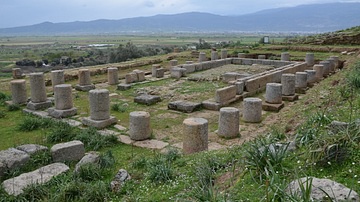
Image
Temple of Zeus Chrysaoreus, Caria
The Temple of Zeus Chrysaoreus (Zeus of the Golden sword) in Alabanda (or Antiochia of the Chrysaorians), an ancient city of Caria in Asia Minor (modern-day Turkey). The temple was built in the 3rd century BCE. It is Doric with a peripteral...
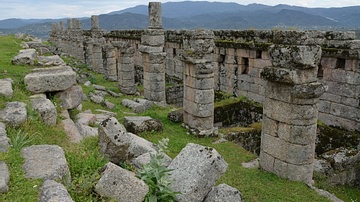
Image
The Hellenistic Agora of Alinda, Caria
Alinda was an ancient city of Caria in Anatolia (now western Turkey). It was situated on a hilltop overlooking a fertile plain and was an important commercial city minting its own coins from the 3rd century BCE. The most striking ancient...